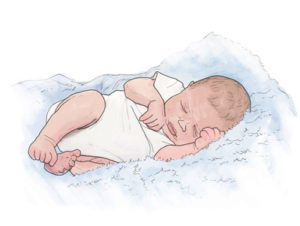For the body to function normally, a person depends on a fairly constant body temperature around 37°C. Most of what we eat is converted to heat in the body. The more active we are, the more energy we burn, and the higher the heat production. We create heat by increasing blood flow, increasing metabolism, muscle contraction and hormonal influences.
We lose heat through sweating and vasodilation. The body increases blood circulation to the skin and we lose heat through the skin. Cold environments and less clothing also help to reduce heat. There are four physical principles that are important to understand in order to assist patients with excess heat or attempting to prevent hypothermia.
Radiation
This is the transfer of heat by infrared rays between a warmer object and a cooler one with no direct contact. The body loses heat by radiating more infrared waves than it absorbs from cooler objects. If the surrounding objects are warmer than the body the body absorbs more heat that than it loses.
A new-born baby should be dried and wrapped immediately after birth to prevent heat loss. This is because the child has a large body surface area compared to body weight, and loses body heat easily. When people curl up the body surface gets less and this prevents heat loss.
Conduction
This is the heat exchange that occurs between molecules of two materials that are in direct contact with each other. 3% of the body’s heat is lost by conduction to solid materials such as a chair or clothing. To increase heat loss by conduction cold sheets, or ice on the forehead can be used. Heat can also be gained via conduction for instance during a hot bath. Fat and muscle tissue protects and insulates the body against heat loss.
Convection
This is the transfer of heat by movement of a gas or liquid between areas of different temperatures. The contact of air or water with the body results in heat transfer by both conduction and convection.
When cool air makes contact with the body it becomes warm and less dense and is carried away by convection currents. Warm air is lighter than cold air and rises; it is replaced by colder air and heat is lost. The faster that air moves e.g. by creating a breeze or using a fan , the faster the rate of convention. This is important to consider when trying to cool a person down using fan therapy.
Evaporation
This refers to the conversion of a liquid to a vapour. In normal resting conditions about 22% of heat loss occurs through evaporation of approximately 700ml of water per day – 300ml in exhaled air and 400ml from the skin surface. This is referred to as insensible water loss.
Evaporation is energy intensive and provides the body’s main defence against overheating during exercise. This process can be reduced by high humidity.
Temperature regulation





